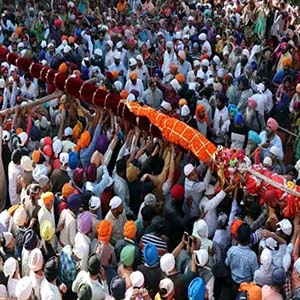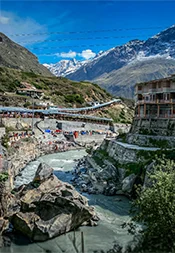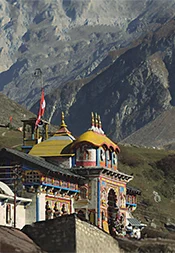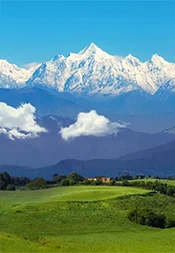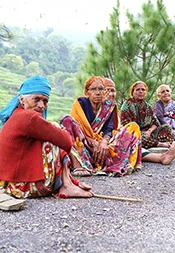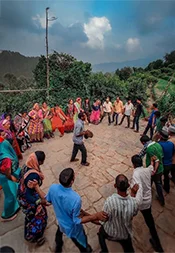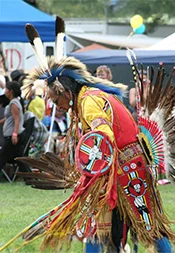The great Himalayas have played an important role in moulding the culture of Uttarakhand. Other than providing an ideal place to embark on a spiritual journey, its unique ecosystem has attracted people since time immemorial to immigrate to its valleys for a serene life.
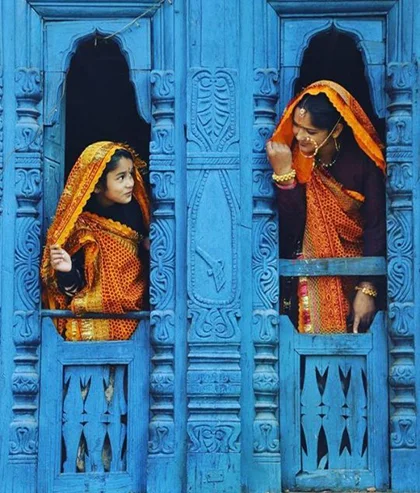
Uttarakhand Culture
While on one hand Himalayas have been placed in high regards among believers from various religions, its difficult terrain and hilly solitude has also contributed to the many myths, faiths and fears of its simpleton masses.
In every other village, stream or Tibba you come across, a deity will be found residing, acting as the protector of the realm who must not be angered or you’ll invite the wrath of the supernatural on yourself. And thus, from time to time local festivals and/or rituals are carried out to please the deity, which involves fairs, folk dance, men and women from all walks of life and occasionally, animal sacrifice(s). The influence is not limited to just faith and festivities of the believers, but also architecture and art of the region.
Garhwal school of painting established roots in the Himalayan state by the end of 17th century with the arrival of several artists like Shyam Das and his son Har Das, from the Mughal courts who specialized in Mughal style of miniature painting. Painters from neighbouring Kangra Kingdom also influenced this school, but it maintained its originality to a great extent.
Explore our Culture or Tradition
Let's get an overview to some of our beautiful cultural or traditional activities and rituals.
Various Artforms and tranditional aspects were still practised in Uttarakhand
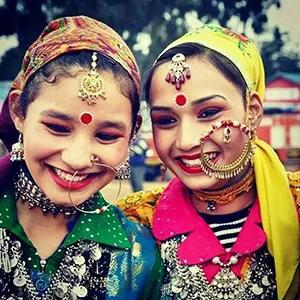
Cultural Wardrobe
Beautiful women with full breasts, slender waist, oval face and thin brows were the muse. Detailed jewellery and almost transparent clothes adorned them. The surreal beauty of the artist’s surroundings, which made them stay back in the hills, also reflected in their works, with a unique blending of passion, nature and religion. Mola Ram is a prominent name in this regard. A poet cum artist, he is known for his paintings, poems, and historical accounts of the royalty of the time.
Traditional Decoration
Another popular art form from Kumaon is Aipan which decorates most of the houses’ doorsteps and places of worship in the region. In simple words, it is the Rangoli of the hilly culture, but drenched in the glory of red and white colors. Traditionally practised by women, it consists of beautiful pattern designs made from the mixture of ochre and paste of rice on a red background. With intricate lines and dots, designs of religious and/or cultural importance are drawn with the last three fingers of hands free style; designs related to Swastika, Surya, Shiva, Durga etc. are common.
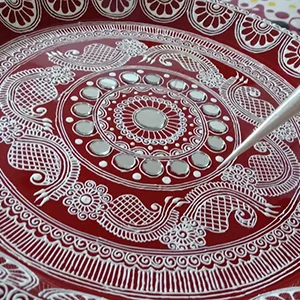
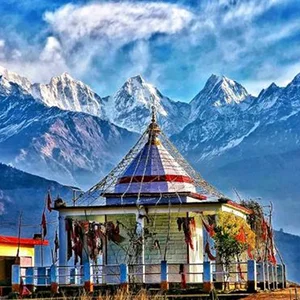
Cultural Heritage
Temples and homes in these regions carry the legacy of wood carvings and wall paintings. Wall paintings also followed the suit of Garhwal Paintings, but instead of focusing on romantic themes, portrayed historical or mythological events. Best place to witness one such example is the Guru Ram Rai Darbar (Dehradun). The walls are adorned with miniature paintings of saints, gods and goddesses. Kankhal, 4 kms from Haridwar, is another place to look out for wall paintings. The havelis (mansions) and houses, that several kings as well as saints who came here, built for themselves were decorated by skilled painters and artisans of Garhwal.
Traditional Monuments
Though most of the original works have faded away with the passage of time or apathy of maintenance, some prominent buildings to lookout for are Bara Kothi, Patiala House, Mangala Bandi-ki-Haveli and Panchayati Akhara. Owing to the ecology of the region and resources available, most the temples and house structures in Uttarakhand have been designed in stone or wooden architecture. Carved doors with fishes and flower designs are easily identified in these buildings. Carved eaves-boards of Pokhu Devta Temple and mini stone temples in Mahasu Devta Temple complex are some famous places to look out for.
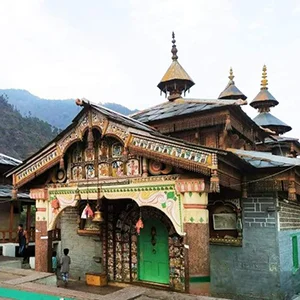

Music and Dance
The serene and silent hills here from time to time also cheer up with the music of local festivals and fairs, where RSVP of the deities is as important as those of humans. A religious obligation for some, for some a periodic entertainment and for others a hanging spot with friends and lovers, the fairs are alive with these umpteen experiences from all walks of life.
Nanda Devi Yatra
Nanda Devi Raj Jaat (Yatra) is one the famous festivals of Uttarakhand. It is believed the Devi Nanda (consort of Lord Shiva and first Devi of the hills) visits her mother’s place around the 2nd week of August (Krishna Paksha of Badho), which is why the event is celebrated. One of the legends associated with it is of the king of Kannauj, Jasdhaval who was cursed by Nanda Devi and had to face her wrath because he defied the norms of the Yatra. Since then, the royal family joins the pilgrimage to seek forgiveness from the Devi.
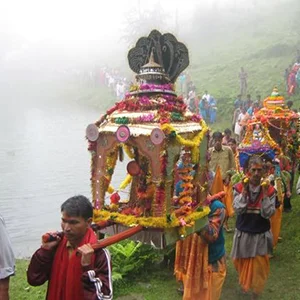
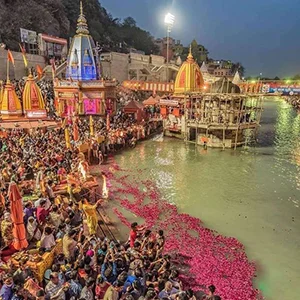
Magh Mela
Magh
Mela
You know a festival is important when it is famous for being the mini-kumbha of Uttarakhand; Magh Mela which is a popular event in the Uttarkashi district, falls in the lunar month of Magha (21st January to 19th February) and starts on the auspicious day of Makar Sankranti. The Mela commences on the banks of Bhagirathi River with the Doli (palanquin) of the Kandar Dev and beating Dhol (drums) of Shree Hari Maharaj Devta. People and deities from various villages of Uttarkashi District and neighbouring Tehri district participate in this celebration, village of Mustiksaur, Kuroli, Bongari, Thalan, Kankri, Mastari, Kudiyal Gaon, Pokhri, Dang and Joshiyara to name a few.
Tapkeshwar and Jhanda Fair
Two popular fairs which are held in Dehradun annually are the Tapkeshwar Fair and the Jhanda Mela. The former is held at Tapkeshwar Temple, a shiva temple 6 kms from the city, and the latter is held every year on the fifth day after Holi to mark the arrival of Sikh Guru Ram Rai Ji in Dehradun. Some more fairs around the state are Bissu Fair (Chakrata), Surkanda Devi Fair (Tehri), Mahasu Devta’s Fair (Hanol), Kavad Mela (Haridwar) and Kunjapuri Fair (Narendra Nagar).
